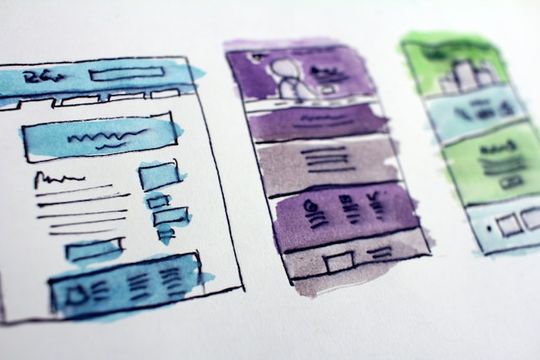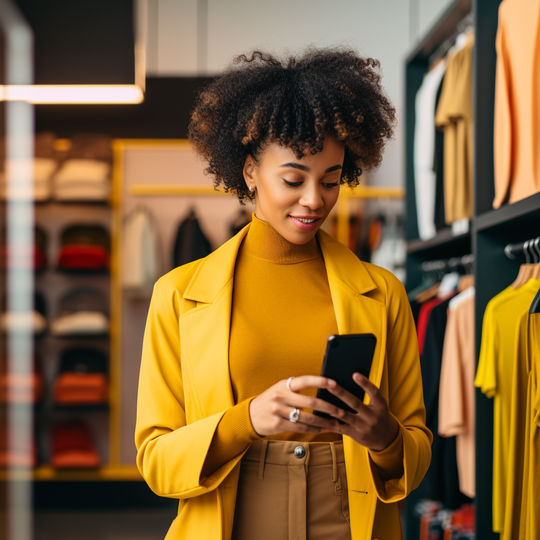Hey everyone, this is Patrick from code that converts and in today's post we're gonna be talking about why you shouldn't use carousel components on your Shopify store.
You might look at popular sites like amazon or Ebay or maybe you might look up popular e commerce designs and see them using carousels to show off different products or offers.
After seeing all these big brands use carousels on their site anyone new to Shopify might think that they should do it too.
Well, if you thought that you would be wrong because these things have been studied and studies have shown that they are known to kill conversions and sales.
Now with that in mind, I got a question for you.
Do you want a cool looking carousel on your Shopify store or do you want to get sales and conversions?
I know you're here for sales and conversions, so we're going to talk more about why you shouldn't use these and at the end I'm going to provide some alternatives you can use on your store instead.
The Data on Why Carousels Kill Conversions and Sales
Back in 2012 Erik Runyon, the technical director of the University of Notre Dame, decided to run a study on the university's use of carousels on their website. He had set up a carousel on one of the university's most trafficked pages and with the help of Google Analytics, he analyzed the performance of that carousel over a three-month period and he found some shocking results.
So only 84% of that 1% even went to the next slide of the carousel and then even smaller percent in 84 made it past the second slide.
At this point, you might be thinking, well, the University of Notre Dame is not an e-commerce site so why is this relevant?
But similar studies done on e-commerce sites showed data that very closely resembled Erik's.
There was another study done on Carousels by a company called Mobify, which focuses on mobile e commerce. And they found that carousels only convert better when the user has context about the type of content that's going to be inside of the carousel.
For example, they only recommended using carousels on a product page because most users expect a product page to have a gallery of images of that product.
So they use carousels to show that gallery of product images.
This makes a lot of sense because customers expect product pages to have a lot of images showing the product off.

The User Experience Issues Related to Carousels
We discussed some of the data about carousels, now, let's dive deeper into the actual issues with carousels that contribute to this data.
As I said previously, the study done at Mobify showed that most carousel components don't provide proper context to the customer about the type of content that's going to be inside of the carousel and that's one of the biggest issues with carousels.
This is such a big issue because customers will look at a carousel and think it looks like an ad. And most customers on any website ignore ads.
Apart from that, there are some other reasons why carousel components don't really work that well. One reason is that they provide too many choices to customers.
Imagine you have a carousel and each slide has a call to action with a button.
Every slide of the carousel has a choice for a customer to make. And since there are often multiple choices they can make, there's a good chance the customer might not choose anything.
So on the off chance that the customer proceeds to the next slide of the carousel, there's a good chance they might not even make a choice.
Another big issue of carousel is that oftentimes the design from each slide is not uniform and consistent. If the customer manages to get to the next slide of the carousel, they'll be confused because the design is vastly different from the previous slide.
Yet another big issue with carousels is that they often have heavy javascript code.
Whenever a page loads on your website, javascript is run in the browser and loaded before the page loads and that contributes to how quickly a page loads.

Often times a lot of carousels contain a lot of heavy and unneeded javascript code and that contributes to a slower page load speed, which is bad for conversions.
This is especially bad for people using mobile devices to access your Shopify store. This is because people expect to have very quick and seamless experiences when using their phones to shop e-commerce stores.
Speaking of phones, that's the last issue I wanted to mention with carousels. Usually carousels are designed with only one device in mind and they don't have a great user experience on other devices.
So usually carousels might work really well on desktops and laptop computers, but they might have a really bad experience on phones or vice versa.
Now there are ways to potentially get around some of these issues, but you really got to ask yourself is the juice worth the squeeze.
What To Use Instead of Carousels on Your Shopify Store
Okay, so if carousels are out, what do I think you should do instead?
Well the first thing I think you should do is figure out what the most important product, offer, or value proposition that your Shopify store and your brand can offer to your customers. When you figure it out, you can optimize a given page with that in mind and see much better results than using a carousel.
Let's say for example, it's a holiday season. Let's say you want to run a valentine's day sale for your products or for a specific collection. You can optimize a given page that has high traffic on your site with a relevant call to action about the sale you're going to run.
Doing That is a much better move than using a carousel and stuffing a bunch of competing marketing messages inside of it.
And if you want to spice things up with that, you might look into using video content. Video content is known to be very engaging and studies have shown that people who engage with video on a store were more likely to buy a product or service.

So if you're able to create video content for your Shopify store, that might be a much better move than trying to use a carousel.
Lastly if you're trying to use carousels to show off a bunch of products and a collection at once, a better move is to use a call to action with a banner and send customers over to the collection page that includes all the products or you can use a grid layout to display all your products.
If you read all this and you still want to use a carousel in your store, that's fine. But now, you know exactly what you're getting into.
If you're going to use it, just make sure you provide your customers with proper context about the type of content that's going to be inside of it.
Doing this gives you a much higher chance that your customers won't ignore the carousel and will interact with it.
If you enjoyed the post please join our email list.
I have a lot more content planned to help you improve the user experience and shopping experience of your Shopify store and to help you get more engagement and sales from your customers.








